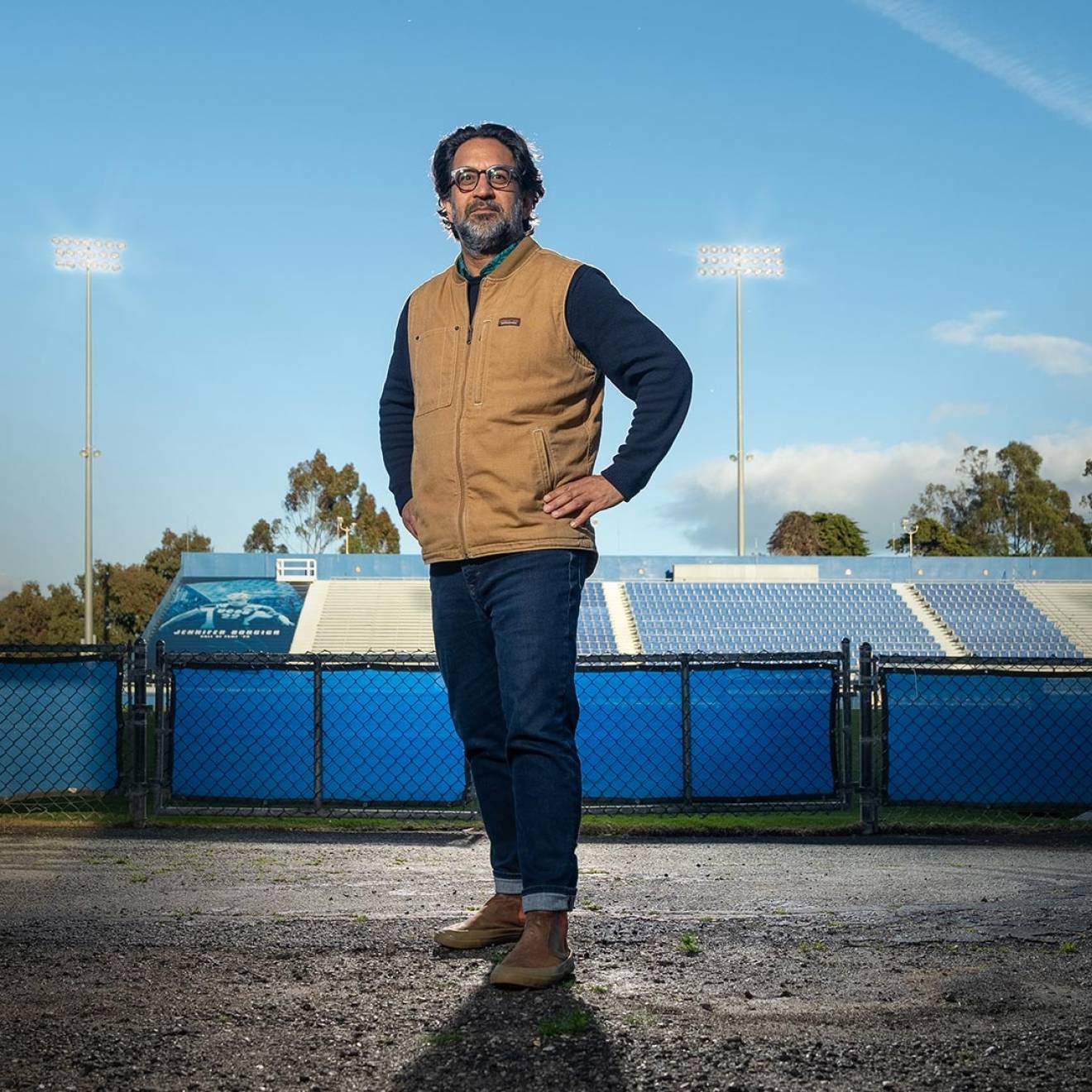James Leonard, UC Merced
The University of California, Merced, entered into a memorandum of understanding (MOU) with Kathmandu University during a ceremony in Nepal on Thursday (Feb. 26), laying the foundation for future collaborations between the two fast-growing institutions.
The MOU marks the first formal step in the relationship between UC Merced and Kathmandu University, with the two schools agreeing to explore faculty, staff and student exchanges, joint research projects, the exchange of academic publications and information, and the promotion of other academic activities.
The relationship spawned from a research trip to Nepal by anthropological archaeologist Mark Aldenderfer — dean of the UC Merced School of Social Sciences, Humanities and Arts — and a subsequent visit by Aldenderfer and Dan Hirleman, then dean of the School of Engineering. The deans quickly saw the potential for collaboration between UC Merced, which opened in 2005, and Kathmandu University, founded in 1991.
“All universities seek international partners,” Aldenderfer said. “The more established UC campuses have many partners at some of the most prestigious universities in the world. We see our partnership with Kathmandu University as a first step in building bridges to other nations with universities that are appropriate to UC Merced’s scale and size.”
The MOU does not commit either university to any financial obligations, though such obligations could be included in future MOUs regarding specific projects and collaborations. The agreement is valid for five years and will automatically extend for another five years, unless the universities agree otherwise.
Aldenderfer, who has been featured in National Geographic for his research on the cave people of the high Himalayas, said he saw a solar panel in disrepair during a visit to Samdzong, Nepal, and wondered whether UC Merced’s prolific solar energy researchers could lend a hand.
He began researching universities in Nepal and found Kathmandu University, which closely matched UC Merced in terms of its size, its growing reputation and its academic focus. Like UC Merced, Kathmandu has strong programs in engineering, science, management, health sciences and arts.
Erik Rolland, interim dean of the School of Engineering and a professor of management at UC Merced, has his own ties to Nepal. Rolland has worked in partnership with the World Bank, the Smithsonian Institution, the University of California and Clemson University to provide education and training for governments in the Himalayas and globally in the area of leadership for sustainable development. He said UC Merced and Kathmandu University can take advantage of each other’s strengths and opportunities.
“Not only are our two universities similar in focus,” Rolland said, “but also we are located in regions that are fertile grounds for studying and addressing the world’s biggest socioeconomic, environmental and technological challenges.”
Aldenderfer said there is also the potential for partnership between Kathmandu University and the UC Merced Blum Center For Developing Economies, an interdisciplinary campus effort to explore new ideas, technologies and services that will benefit the lives of the least prosperous people of the San Joaquin Valley.
“Many problems seen in developing nations such as Nepal can also be seen in our own backyard,” Aldenderfer said. “It makes sense, then, to explore ways in which projects that benefit the people of the San Joaquin Valley can be put to work in Nepal, and vice versa.”
Bim Prasad Shrestha, associate dean for research and other activities in the School of Engineering at Kathmandu University, said his university has found the right partner to work with as it establishes itself as a premier research and academic institution.
“The synergistic collaboration with UC Merced will not only bring strong ties between the two institutions, but also make the results of research available for immediate implementation in their respective communities,” Shrestha said. “As we are located in completely different geographical locations, we have excellent access for demonstrating or piloting innovative engineering research that could eventually be applied anywhere in the world.”

